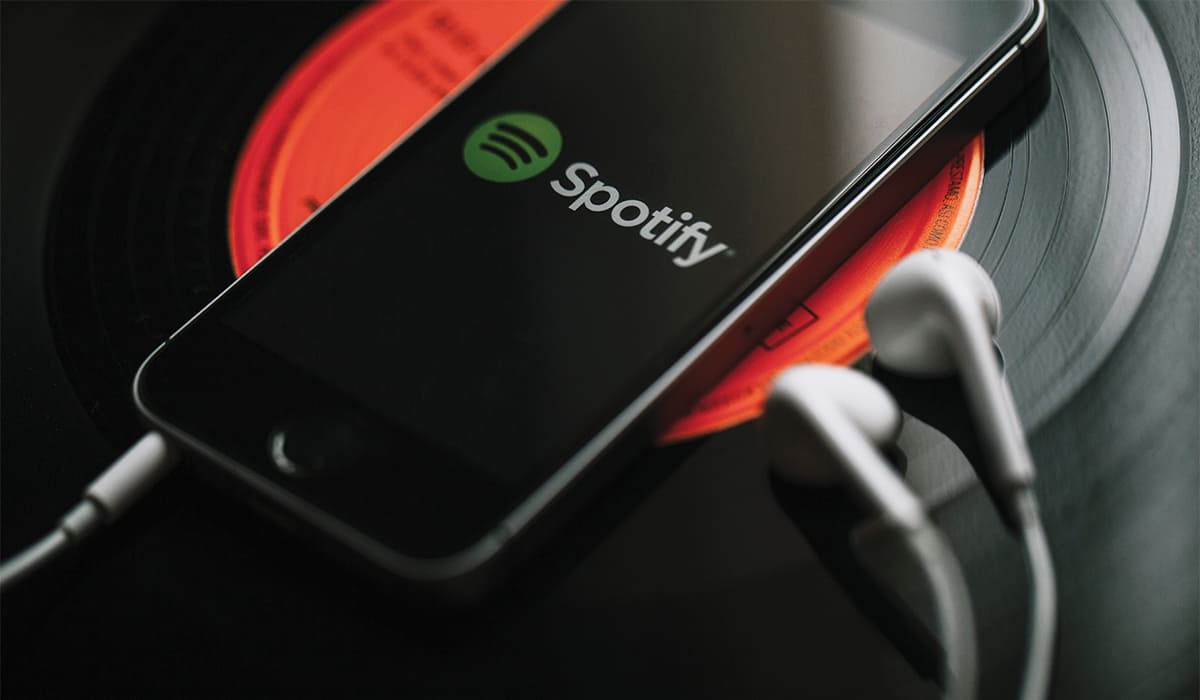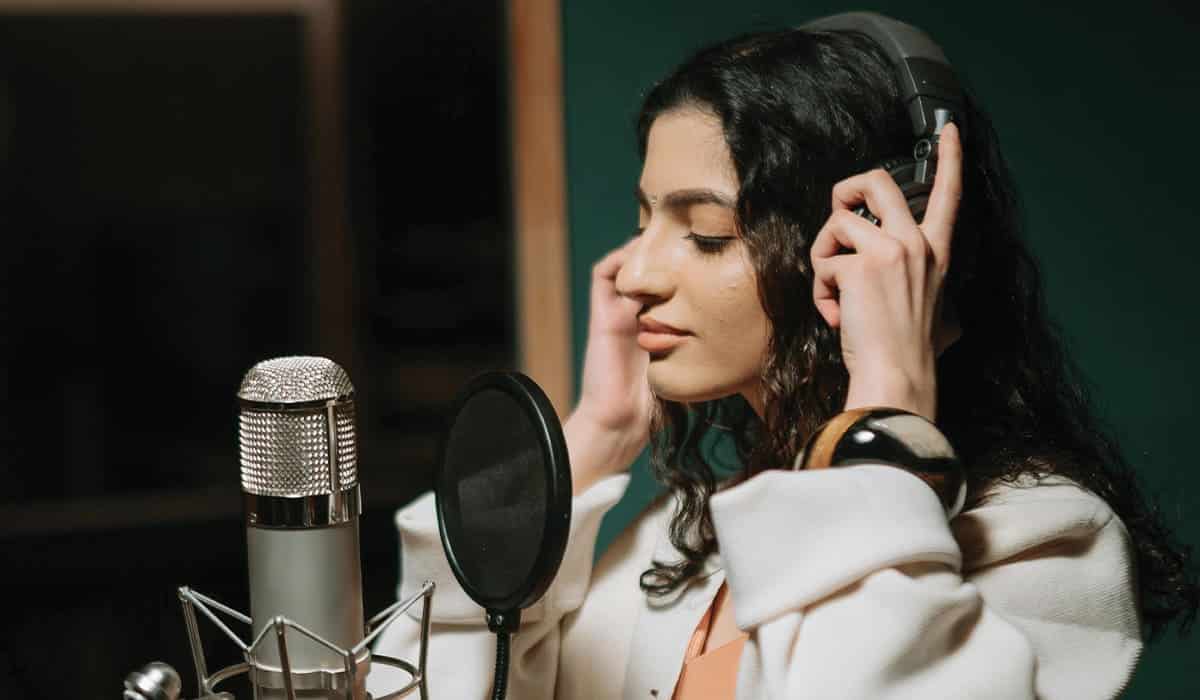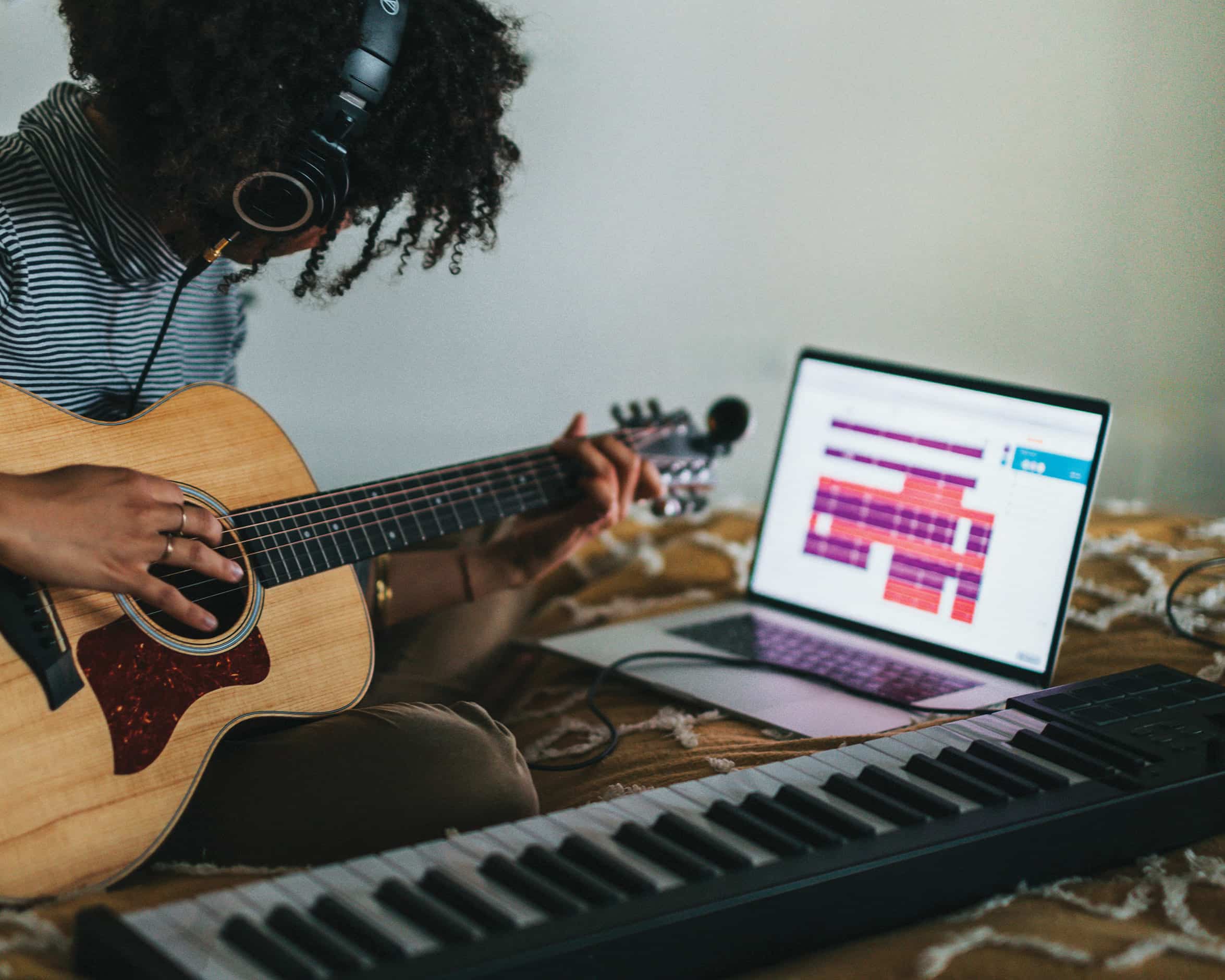Earning money as a musician is not what it used to be. As digital music is now mainstream, album sales are not as simple as selling records physically. So, what does it mean to stream music and how can you make a living from it?
She was singing about toasted sandwiches, no jokes. The song -by Afrikaans singer-songwriter Ziane Saayman — called ‘Die Braaibroodjie Reel’, referencing the South African grilled cheese sandwich that’s traditionally toasted over the coals at a braai. And while we love a braaibroodjie as much as the next person, we really had no desire to hear a song whose name roughly means ‘the toastie rule’. It’s unclear in fact if anyone really wanted to hear that song, yet at one point it had almost 60 000 views on TikTok, well over 65 000 views on YouTube, and had racked up more than 100 000 listens on Spotify. Why had this song gone viral? Why was its viewership so high?
The answer is layered: Ziane was chuckling about the fact that those views were being driven by ‘haters’, people who genuinely disliked the song but whose disparaging feedback was creating precisely the kind of hype her song needed to get noticed: the trick, it turns out, is not necessarily to create a great song, but to spark ceaseless online conversation, essentially tricking the algorithm into calculating that a terrible tune is actually popular and is attracting listeners’ attention.
This off-the-cuff insight says plenty about the modern music industry, in which streaming platforms have become the primary means by which people access and listen to music. It is also how we discover new artists, find out what’s popular, see what other people are listening to, and in the process train the platform’s algorithm to make recommendations based on what it ‘thinks’ our personal taste is.
In a sense, it’s a form of AI-driven coercion, sophisticated analyses of our listening habits being used to drive listeners’ attention either towards what’s popular or to what we already know and like and listen to most frequently. It ensures that whatever’s trending tends to trend even more. And it means that listening to Ziane’s toastie song out of curiosity can cause to it accrue enough streams that it momentarily becomes a ‘hit’.

Streaming decoded
Streaming has been praised for democratising music, putting just about everything that’s ever been recorded at our fingertips. It’s also made it much easier to release a song into the world. Once you get your music onto a streaming platform, the entire planet becomes a potential listening base. These platforms are credited with turning the music industry around, bringing it back from the brink of collapse. And the growth has been phenomenal. In 2023, streaming’s global user base was 919 million, accounting for $15.19 billion in market value; by 2027, that’s projected to increase to 1.1 billion subscribers, generating $18.56 billion.
Spotify, the most successful streaming platform, is growing every year. Founded in 2006, by 2011 it had 2 million subscribers and 26 million by 2019. By the end of 2024, Spotify’s monthly active users amounted to 602 million, 12% up on 2023.
Spotify’s stated mission has been to provide “a million creative artists the opportunity to live off their art”, yet while there are in the region of 7 million artists on the platform, just over 10 000 of them generate more than $100 000 per year via the platform. “That’s a beautiful thing,” claims Spotify’s Music Business VP, David Kaefer, but the reality is that the majority of artists don’t, in fact, make a viable living from streaming. Spotify, on average, pays between $0.003 and $0.005 per stream, making it one of the better-paying platforms, but artists’ earnings fluctuate dramatically according to the deal that’s been signed. Technically, a hit song that’s been streamed a million times could earn around $3 180 (or around $8 000 on Apple Music), before various fees and deductions (taken by record labels for distribution fees, taxes and the like). That means that, on Spotify, Ziane might have made around $318 for her braai toastie song, before deductions -that’s if her music distributor had signed a good deal with the platform.
That is one song over several months, with tremendous behind-the-scenes activity intended to make the song go viral.

The unsung struggle for music artists
Streaming may have revitalised the music industry and expanded its reach and removed barriers to distribution, but a recent study shared that, in 2023, the top 1% of artists accounted for 78% of all streams and 83% of streaming revenue. And while 90% of surveyed artists report that streaming accounts for over half their music related income, some 68% of artists say their overall music income has decreased since streaming took over the industry.
Research shows that streaming’s unspoken ‘superstar economy’ ensures that a small number of top-tier artists earn a disproportionate revenue share – a gap that is worse than it was pre-streaming. The data suggests that streaming alone is unlikely to support the full-time career of a mid-tier artist.
Another downside is that investors and record labels (and festival organisers) will look at the number of accrued streams as an indicator of an artist’s worth. Instead of investing in artistry, they will most likely favour bankability, which is measured according to perceived popularity —low numbers of streams disincentivise investment in new, undiscovered, potentially groundbreaking music. The long-term impact may well be the steady deterioration of diversity in music.
One concern worth noting is that the algorithms that are designed to keep subscribers listening also tend to have us returning to the same kind of music, narrowing our frame of interest. A downside is that many artists who are struggling to break into the streaming market will emulate music that’s already popular, further homogenising the industry even more.
Keep in mind that the more music subscribers listen to, the smaller the piece of the pie each artist is liable to receive, so if you are a small fish in the streaming ocean and your song gets listened to once by a few people who also listen to hundreds of other songs in a month of listening, the revenue coming your way might ultimately be rather a minuscule fraction of the money that’s circulating. Ideally, you need to be a Beyonce or Taylor Swift to generate wrecking-ball levels of revenue.
Or, you need to be tenacious like Ziane, prepared to do everything in your power – even spark outrage and mobilise haters — to set off a viral response to your music, generate enough buzz and demand that your songs find their way onto playlists, get shared, get recommended, or even get listened to by people who are definitely not coming back for more. If enough people listen, you never know what might happen next.
Get your song trending online
Quality aside, getting your song to trend on Spotify requires you to be active as a marketer, visible, present and always engaging with the public. Besides covering all the social media bases, optimise your artist profile on the streaming platforms you’re using and make your profile as engaging and informative as possible. If you don’t mind spending money, consider paying for Spotify ads to drive listeners to your music.
On average, when an artist is featured on a popular playlist, their stream rate increases by 347%. Definitely look into using Spotify for Artists to pitch your music to playlist editors and curators.
Regularly releasing new songs (at least once a month) is better for your bottom line instead of sporadically dropping art album. Artists who release at least one song per month earn on average 43% more per year than musicians who drop an entire album ever so often.
By: Keith Bain
Photography by: Getty, Pexels, Shutterstock
Text courtesy of Balanced Life magazine







